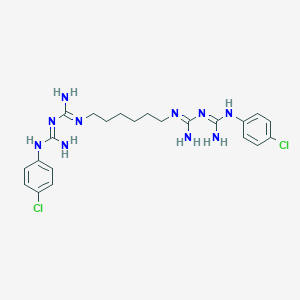Aphthous ulcer, Oral candidiasis, Oral hygiene
Adult: As chlorhexidine digluconate 0.2% spray: Apply bid. Max: 12 actuations bid. As chlorhexidine digluconate 1% gel: Brush teeth with 1 inch of gel once or bid for about 1 minute. As chlorhexidine digluconate 0.2% solution: Rinse mouth bid with 10 mL for about 1 minute or soak dentures for 15 minutes bid.
Child: ≥12 years Same as adult dose.
Child: ≥12 years Same as adult dose.
Mouth/Throat
Gingivitis
Adult: For treatment and prevention: As chlorhexidine digluconate 0.2% spray: Apply bid for 1 month. Max: 12 actuations bid. As chlorhexidine gluconate 0.12% solution: Rinse mouth bid with 15 mL for about 30 seconds. As chlorhexidine digluconate 0.2% solution: Rinse mouth bid with 10 mL for about 1 minute. As chlorhexidine digluconate 1% gel: Brush teeth with 1 inch of gel once or bid for about 1 minute for 1 month.
Child: ≥12 years Same as adult dose.
Child: ≥12 years Same as adult dose.
Mouth/Throat
Prophylaxis of dental caries
Adult: As chlorhexidine digluconate 1% gel: Apply for 5 minutes every night for 14 days in a close-fitting tray. Repeat treatment every 3-4 months.
Child: ≥12 years Same as adult dose.
Child: ≥12 years Same as adult dose.
Topical/Cutaneous
Antiseptic and disinfectant
Adult: As chlorhexidine acetate 0.05% solution: Irrigation of wound and burn. As chlorhexidine gluconate 4% solution: General cleansing of skin and wounds. As chlorhexidine gluconate 0.25% cream: Minor burns and abrasions.




 Sign Out
Sign Out




